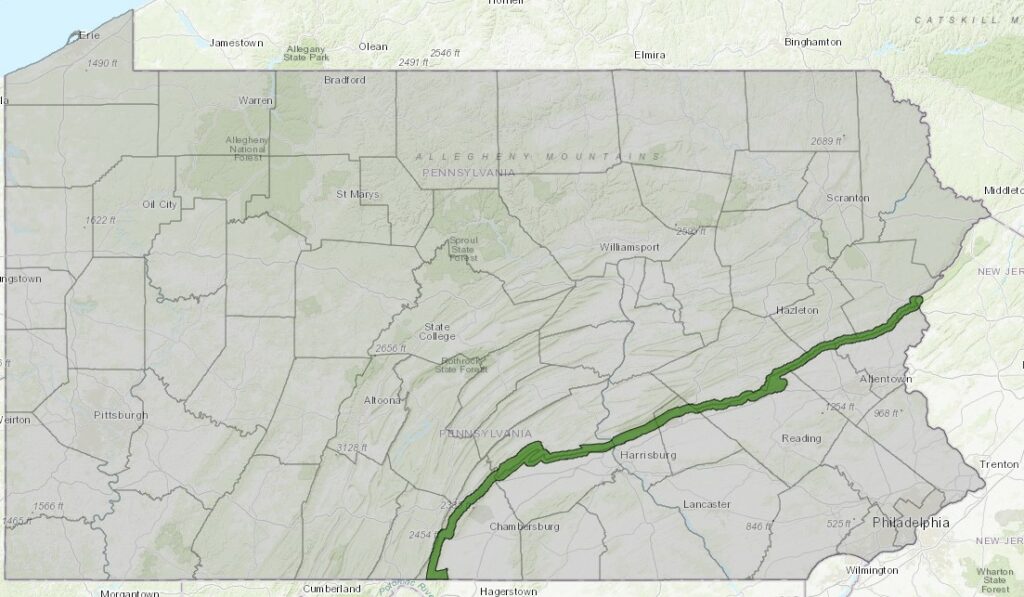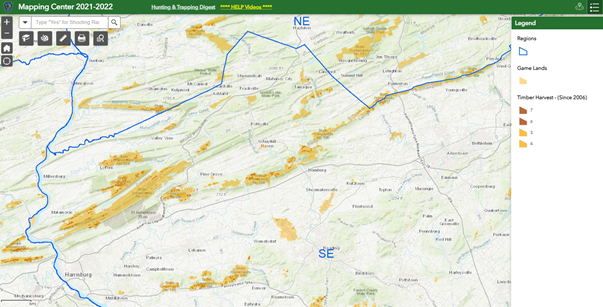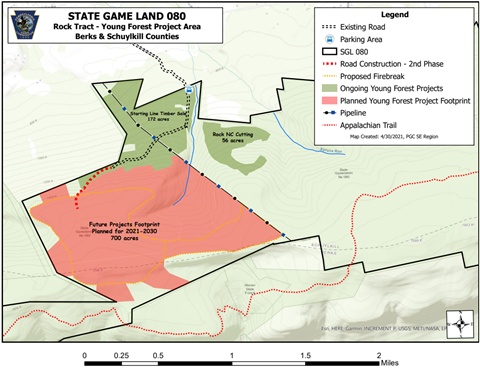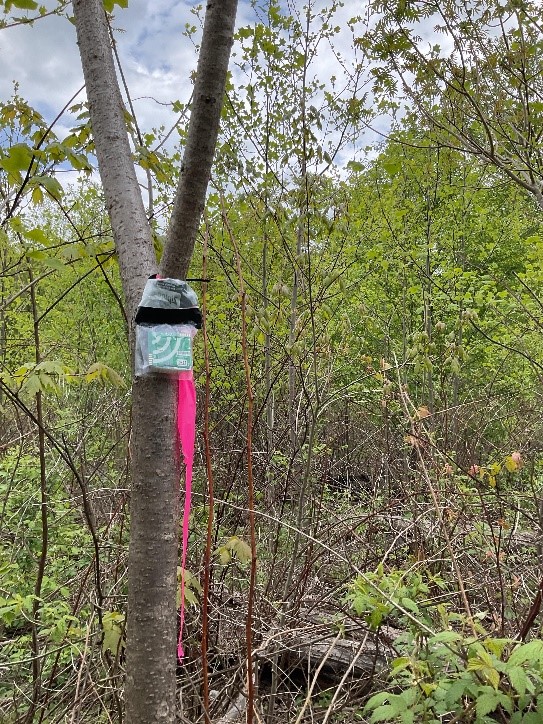Part of RGS & AWS’ Statewide Collaboration with the Pennsylvania Game Commission
by Ben Larson | RGS & AWS Mid-Atlantic Forest Conservation Director
How do we implement RGS’ model of working forests at a scale large enough and at a pace rapid enough to make a difference for grouse and other wildlife? Luckily for us, we have real-world examples of how we’re accomplishing our mission – including in southeast Pennsylvania, where a project with the Pennsylvania Game Commission (PGC) is achieving landscape-scale habitat benefits in less than a decade.
In 2016, PGC foresters and the PGC’s grouse biologist Lisa Williams began working with RGS & AWS to develop a grouse habitat plan for the State Game Lands (SGLs) that run along the Kittatinny Ridge from Harrisburg to the Delaware River. From these discussions came a plan to increase young forest cover at a landscape scale over the next 10-15 years.
Meaning “endless mountain” in the Lenni-Lenape language, The Kittatinny is part of the Blue Mountain, which extends to North Carolina. In addition to providing habitat to ruffed grouse and other non-migratory wildlife, the Kittatinny Ridge is the premier raptor migration corridor in the Northeast U.S. and one of the leading raptor migration corridors in the world. The Appalachian Trail traverses most of the Kittatinny Ridge in Pennsylvania, crossing several state forests and parks and numerous SGLs.

The PGC’s Southeast Region Kittatinny Ridge Grouse Plan has six goals. The first goal is to regenerate a mosaic of young forest stands that shift across the landscape over time. Young forest habitat acres in the amount of 3,300 have been established on the Kittatinny Ridge, and an additional 3,700 acres have received preparation cuttings. A combination of commercial and non-commercial projects was utilized to improve these acres.
The second goal is to provide grouse with all necessary habitat types within one mile, including good brooding habitat and patches of older forest to serve as nesting and feeding habitat, especially for buds during the winter. No-cut islands and travel corridors within larger tree-cutting projects provide this type of habitat for grouse in areas with high amounts of early-successional forest.
The third goal is to establish “permanent young forest areas” in select locations where terrain and habitat type limits the size of commercially-viable forest management projects, either with forestry mowing equipment or prescribed fire, which is more cost-effective.

The fourth goal is to establish and improve conifer cover on the game lands to improve winter thermal cover for grouse. Though hardwoods dominate the Kittatinny Ridge, remnant pines are scattered along the ridgetops.
The fifth goal is to improve road access to “stranded” PGC parcels, so logging crews and equipment can conduct more cost-effective forest management. The Charles Bechtel Chapter of RGS & AWS and the National Wild Turkey Federation have helped fund many road-improvement projects. Investing in road improvements is a far cry from traditional habitat projects. Still, the Charles Bechtel Chapter saw how roads make possible the forest management that creates young forest habitat at a greater scale and cheaper per-acre cost.

The sixth and final goal is to encourage neighboring forest landowners to conduct forest habitat projects on their properties to expand the young forest habitat mosaic. For example, the PGC is working on habitat projects with Weiser State Forest. In addition, RGS & AWS and the PGC will be reaching out to private landowner cooperators in the PGC’s Hunter Access Program whose forestland is near the SGLs and then connecting interested landowners with a consulting forester who can help them manage their forestland. This targeted outreach will expand the habitat mosaic unto private lands.
Finally, RGS & AWS will be helping to fund grouse monitoring conducted by Jeff Larkin, a research professor with the Indiana University of Pennsylvania and American Bird Conservancy’s Eastern Forest Bird Habitat Coordinator. Using autonomous recording units (ARUs), Larkin and a graduate student will be assessing forest type, elevation and other factors that influence grouse occupancy in young forests along Kittatinny Ridge and other areas in Pennsylvania. The team plans to deploy 120 ARUs within eight 15-year-old forests in southwestern, southeastern, and northcentral Pennsylvania. Each ARU will be programmed to record 1.5 hours each morning from mid-April through late May. Once ARUs are recovered from the field, Larkin’s collaborators at University of Pittsburg will use supercomputers to process the recordings using a machine-learned classifier that’s extremely effective at detecting grouse drumming. The use of ARUs and the machine-learned classifier is a game-changer for our ability to rigorously monitor drumming grouse at many young forest patches across large spatial extents annually.

RGS & AWS thank the PGC, Jeff Larkin and other partners who are helping restore habitat at a landscape scale along the Kittatinny Ridge and elsewhere. This article was based on a more detailed version written by Randy Baumann, retired Southeast Region Forester with the Pennsylvania Game Commission.

